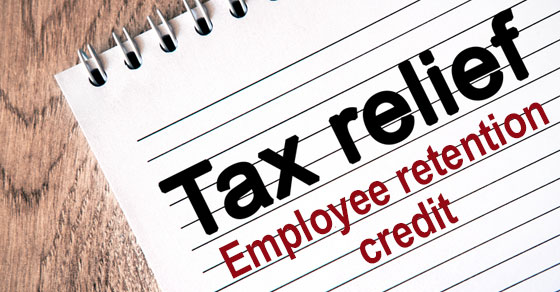Multibillion-Dollar Tax Muddle Hovers Behind Small-Business Loan Program
- ByPolk & Associates
- Apr, 13, 2020
- All News & Information, COVID-19 Resources
- Comments Off on Multibillion-Dollar Tax Muddle Hovers Behind Small-Business Loan Program
Tax experts say Congress should clarify whether expenses tied to loan forgiveness are deductible
Relief from not making employment tax deposits due to COVID-19 tax credits
- ByPolk & Associates
- Apr, 13, 2020
- All News & Information, COVID-19 Resources
- Comments Off on Relief from not making employment tax deposits due to COVID-19 tax credits
The IRS has issued guidance providing relief from failure to make employment tax deposits for employers entitled to refundable tax credits provided under two laws. The two laws are the Families First Coronavirus Response Act and the Coronavirus Aid, Relief, and Economic Security Act. Under the laws, the penalty for failure to deposit the employer share of Social Security tax is waived in anticipation of the allowance of the refundable tax credits. IRS Notice 2020-22 provides that an employer won’t be penalized for failing to deposit employment taxes related to qualified leave or qualified retention wages in a calendar quarter if certain requirements are met. Contact us for more information.
Paycheck Protection Program Loan (PPP) Application from Small Business Association (SBA) – Now Open as Updated Guidance Becomes Available
- ByPolk & Associates
- Apr, 06, 2020
- All News & Information, COVID-19 Resources
- Comments Off on Paycheck Protection Program Loan (PPP) Application from Small Business Association (SBA) – Now Open as Updated Guidance Becomes Available
After much discussion the SBA has now opened its application process for SBA lenders to begin enabling small business owners to begin applying for the Paycheck Protection Plan Loan. As this the program opened additional final interim guidance was issued clearing up several key ambiguities in the program and its process.
You should note that most lenders are handling the loan requests prioritizing their current lending relationships first, so that is the best place for you to start.
Economic Injury Disaster Loan (EIDL) Grant Application from SBA Now Open as Updated Guidance Becomes Available
- ByPolk & Associates
- Apr, 06, 2020
- All News & Information, COVID-19 Resources
- Comments Off on Economic Injury Disaster Loan (EIDL) Grant Application from SBA Now Open as Updated Guidance Becomes Available
The Economic Injury Disaster grant is now available, and, in most cases, we recommend that qualified businesses apply for this grant. The process is very easy and straightforward and normally takes less than 30 minutes, but you should be prepared before you apply. Here is some quick information that might be useful SBA ECONOMIC INJURY DISASTER (EIDL) ADVANCE […]
Answers to questions about the CARES Act employee retention tax credit
- ByPolk & Associates
- Apr, 06, 2020
- All News & Information, COVID-19 Resources
- Comments Off on Answers to questions about the CARES Act employee retention tax credit
The recently enacted Coronavirus Aid, Relief, and Economic Security (CARES) Act provides a refundable payroll tax credit for 50% of wages paid by eligible employers to certain employees during the COVID-19 pandemic. The employee retention credit is available to employers, including nonprofits, with operations that have been fully or partially suspended as a result of a government order limiting commerce, travel or group meetings. The credit is also provided to employers who have experienced a greater than 50% reduction in quarterly receipts, measured on a year-over-year basis. The IRS released FAQs about the credit. Here’s a link: https://bit.ly/2R8syZx . Contact us if you need assistance.
SBA offering loans to small businesses hit hard by COVID-19
- ByPolk & Associates
- Mar, 25, 2020
- All News & Information, COVID-19 Resources
- Comments Off on SBA offering loans to small businesses hit hard by COVID-19
If your small business has been hurt by the outbreak of the coronavirus (COVID-19), the Small Business Administration is offering some financial relief. The agency has announced the availability of Economic Injury Disaster Loans under the Coronavirus Preparedness and Response Supplemental Appropriations Act. Each state’s governor can submit a request for assistance, the criteria for which have been relaxed. Once approved, the loans may provide up to $2 million in financial assistance to small businesses anywhere in the state. The interest rate is 3.75% for qualifying companies and 2.75% for eligible nonprofits. Terms vary based on a borrower’s ability to repay. Contact us for more info.
Individuals get coronavirus (COVID-19) tax and other relief
- ByPolk & Associates
- Mar, 25, 2020
- All News & Information, COVID-19 Resources
- Comments Off on Individuals get coronavirus (COVID-19) tax and other relief
Taxpayers now have more time to file their returns and pay any tax owed because of the coronavirus (COVID-19) pandemic. The IRS announced that the filing due date is automatically extended from April 15, 2020, to July 15, 2020. Taxpayers can also defer making federal income tax payments, due on April 15 until July 15, without penalties and interest, regardless of the amount they owe. The deferment applies to individuals, trusts, estates, corporations, other non-corporate tax filers and those who pay self-employment tax. They can also defer their initial quarterly estimated federal income tax payments for the 2020 tax year from the April 15 deadline until July 15. Contact us with questions.
IRS Clarifies Payment Extension | Due date remains April 15
- ByPolk & Associates
- Mar, 20, 2020
- All News & Information, COVID-19 Resources
- Comments Off on IRS Clarifies Payment Extension | Due date remains April 15
The IRS issued Notice 2020-17 clarifying the recent announcement by Treasury Secretary Mnuchin extending tax payments. The due date for filing 2019 federal income tax returns remains April 15 absent a valid extension. We do not know if there will be a failure to file penalty if an extension or return is not submitted by […]
The difference between a mission statement and a vision statement
- ByPolk & Associates
- Mar, 19, 2020
- All News & Information
- Comments Off on The difference between a mission statement and a vision statement
Many business owners put off writing mission statements, and perhaps even fewer have created vision statements. There are reasons for doing both. Stakeholders such as lenders, investors and job seekers appreciate such statements. You and your employees may also benefit from the renewed focus of putting your mission and vision into words. What’s the difference? A mission statement’s purpose is to express why you’re in business, what you’re offering and whom you’re looking to serve. It should be free of industry jargon and no more than a brief paragraph. A vision statement tells interested parties what you want to accomplish. It should be short and catchy. Contact us for more info.
Why you should keep life insurance out of your estate
- ByPolk & Associates
- Mar, 19, 2020
- All News & Information
- Comments Off on Why you should keep life insurance out of your estate
If you have a life insurance policy, you probably want to make sure that the life insurance benefits your family will receive after your death won’t be included in your estate. That way, the benefits won’t be subject to the federal estate tax. Under the estate tax rules, life insurance will be included in your taxable estate if either: 1) Your estate is the beneficiary of the insurance proceeds, or 2) You possessed certain economic ownership rights (called “incidents of ownership”) in the policy at your death (or within three years of your death). There are other strategies for keeping insurance out of your estate. Contact us for more information about your situation.






